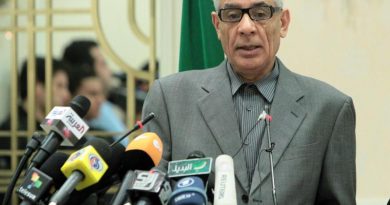Historical Earthquake Devastates Morocco
Sophia Alicea
Staff Writer
On September 8, 2023, hundreds of lives were harmed in several cities across Morrocco. The European-Mediterranean Seismological Centre (EMSC) data recorded a devastating 6.8 magnitude earthquake in the country. With the earthquake’s epicenter striking several small villages in the High-Atlas Mountains, the damages were experienced throughout the state. The earthquake hit the nation’s capital, Rabat, as well as Marrakesh, Casablanca, Agadir, and Essaouira, according to Disaster Philanthropy. Morrocco hasn’t seen an earthquake of this magnitude in nearly six decades.
The earthquake struck at 11 p.m. local time. According to NPR, as of September 19, the disaster’s official death toll in Morocco had reached around 3,000 people. At least 380,000 more individuals suffered damages in addition to the 3,000 confirmed cases. According to the New York Times, the earthquake occurred in the African Plate, which is “about 340 miles south of the African-Eurasian plate boundary, which is seismically active.” Because tremors frequently happen at very shallow levels, earthquakes at the meeting point of these plates can be more deadly.
The Moroccan government has been quickly and efficiently responding to the crisis. While they prioritize sufficient blood supply for the injured and non-food essentials for the displaced, the Moroccan Red Cresent Teams have been implementing both physical and mental health support for the victims. Although, the likelihood of discovering survivors is now highly slim. As temperatures in the mountains are anticipating their seasonal drop and hundreds of people are living in improvised homes, the relief efforts focus on providing the populace with drinkable filtered water, sanctuary, blankets, and mattresses according to the Red Cross. Regarding the level of assistance, the Moroccan Red Cross and the Moroccan government have been picky in their acceptance to deal with the natural disaster. Officials reportedly stated they wish to maintain control and refuse to take the chance that the search-and-rescue operations would become disorganized and overwhelming.
In the village, the majority of the homes are utterly unusable. Many have fallen, and those that are left standing are unstable and deadly. Some of the structures appear to have unfurled; entire walls have been removed, revealing the interior’s ruins. CNN noted that Moroccan locals believe the structures in the mountainous region could collapse at any moment, so the villagers have been avoiding the buildings at large. Because the pipes have been destroyed, there is currently no water.
The New York Times also suggests, given the severity of this region’s history with natural disasters, the more populated towns such as Marrakesh, Agadir, and Rabat, have been able to improve upon their infrastructure. Since the 1960 earthquake disaster in Agadir extinguished 12,000 individuals, LeMonde notes that the lessons of enhanced building codes for Agadir have yet to be circulated to the micro-villages of the mountains. This raises further infrastructure concerns regarding the quality of life in the mountainous region and the ability to get aid circulated within the area. According to Dr. Iyd al-Tarazi, the earthquake had the devastating power of 25 nuclear bombs, According to Sputnik Arabic ..
The scramble to find survivors has quickly become a humanitarian nightmare, as the tiny villages throughout the High Atlas Mountains are incredibly inaccessible. Due to their accessibility issues, the mountain villages are difficult to assist and supply with materials. Most of the region is cut off from them due to telecom disruptions. As responders rummage through the wreckage of collapsed homes in isolated regions, the death toll is anticipated to increase. Luck and time are working against the rescuers. Noted by CNN, finding survivors is vital in the first 72 hours following an earthquake since after this time frame, the conditions of trapped and injured people can swiftly deteriorate. This 72-hour window is called the “golden period” for retrieving individuals from the rubble alive by Joe English, spokesperson of the United Nations International Children’s Emergency Fund (UNICEF).
As of current, the situation and climate in Morocco is stable. The state is no longer at risk for another wave of natural disasters. The main priority amongst international organs providing aid for Morocco is to get the Moroccan government to actually accept aid outside of the Red Cross. The international community has become baffled at Morocco’s resistance for international assistance. Sources have theorized Morocco’s nationalization of aid as a way for the state to demonstrate strength in economic and environmental resources amongst the adversity the region has faced the past few weeks.


